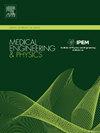Realistic approach for sub-bandage pressure appraisal
IF 1.7
4区 医学
Q3 ENGINEERING, BIOMEDICAL
引用次数: 0
Abstract
Manufacturers estimate the specific compression levels of their products to satisfy the intended medical purposes. Medical compression bandages have different intended purposes. This means that the engineer must be able to estimate the clinical performance, referred to as the interface pressure, during product development and prior to clinical testing in humans. Unfortunately, the mathematical equations found in the literature do not result in interface pressure values that are similar to the ex vivo pressure. Therefore, the present work aims to demonstrate that the use of bandage elongation as a premise for predicting the interface pressure, as revealed new expression, can provide a reliable estimate.
Methods
Pressure of compression bandages can be discrepant when using different method or devices. This work proposes a modified equation of Pascal and Laplace, used to estimate the sub-bandage pressure, is given by: p = (2*π*F)/ (ε+1)*L0*w, where P, represents the pressure in kPa, F is the force applied on the bandage width (w), L0 is the initial length, and ε = (ΔL/L0)*100 is the relative elongation expressed in [%].
Bandage specimens underwent a tensile test using a constant rate extension (CRE) device. The tensile test determined the elongation resulting from an arbitrary force and predicted the sub-bandage pressure. The elongation was then prescribed as the stretch required to achieve ex vivo pressure. The elongation and pressure were measured ex vivo with a ruler and the PicoPress® device, respectively, and compared to the predicted elongation and pressure.
Result
The predicted pressure (24 mm Hg), calculated for ε = 48 % in the pressure equation, is not significantly different from the ex vivo pressure (26 mm Hg), as measured by a healthcare professional using the PicoPress®. The p-value (0.102) is greater than α (0.05) and the Pearson coefficient, R = 0.529, indicates a moderate relationship between the two variables.
绷带下压力评估的现实方法
制造商估计其产品的特定压缩水平,以满足预期的医疗目的。医用压缩绷带有不同的预期用途。这意味着工程师必须能够在产品开发期间和人体临床测试之前估计临床性能,即界面压力。不幸的是,在文献中发现的数学方程并没有得出与离体压力相似的界面压力值。因此,本研究旨在证明,使用绷带伸长率作为预测界面压力的前提,正如揭示的新表达式一样,可以提供可靠的估计。方法使用不同的方法或设备时,绷带的压力会有差异。本文提出了一个修正的帕斯卡和拉普拉斯方程,用于估计绷带下的压力,其表达式为:p = (2*π*F)/ (ε+1)*L0*w,其中p表示压力,单位为kPa, F为施加在绷带宽度上的力(w), L0为初始长度,ε = (ΔL/L0)*100为相对延伸率,单位为[%]。绷带标本采用恒速率拉伸(CRE)装置进行拉伸试验。拉伸试验确定了由任意力引起的伸长率,并预测了绷带下压力。然后规定伸长率为达到体外压力所需的拉伸。分别用尺子和PicoPress®装置在体外测量伸长率和压力,并与预测的伸长率和压力进行比较。结果在压力方程中以ε = 48%计算的预测压力(24 mm Hg)与医疗保健专业人员使用PicoPress®测量的离体压力(26 mm Hg)无显著差异。p值(0.102)大于α值(0.05),Pearson系数R = 0.529,两者呈正相关。
本文章由计算机程序翻译,如有差异,请以英文原文为准。
求助全文
约1分钟内获得全文
求助全文
来源期刊

Medical Engineering & Physics
工程技术-工程:生物医学
CiteScore
4.30
自引率
4.50%
发文量
172
审稿时长
3.0 months
期刊介绍:
Medical Engineering & Physics provides a forum for the publication of the latest developments in biomedical engineering, and reflects the essential multidisciplinary nature of the subject. The journal publishes in-depth critical reviews, scientific papers and technical notes. Our focus encompasses the application of the basic principles of physics and engineering to the development of medical devices and technology, with the ultimate aim of producing improvements in the quality of health care.Topics covered include biomechanics, biomaterials, mechanobiology, rehabilitation engineering, biomedical signal processing and medical device development. Medical Engineering & Physics aims to keep both engineers and clinicians abreast of the latest applications of technology to health care.
 求助内容:
求助内容: 应助结果提醒方式:
应助结果提醒方式:


